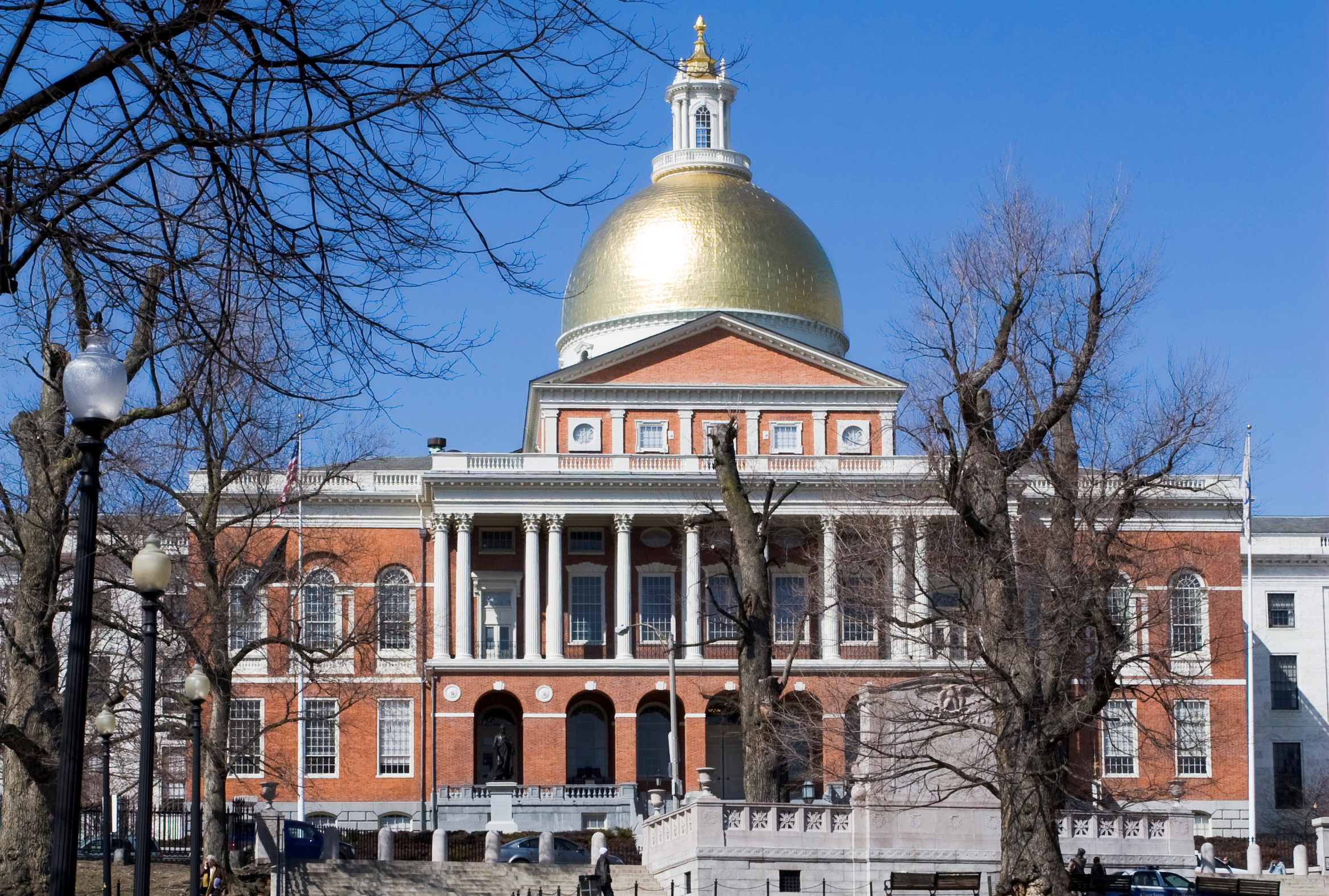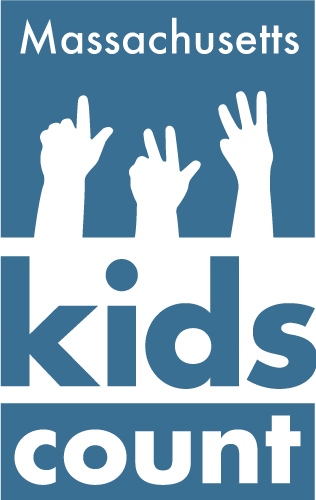As difficult as this past year has been, it would have been worse without the more than $70 billion in federal relief to Massachusetts so far from just the first five of the COVID-19 federal relief bills. About $39 billion in federal dollars goes directly to individuals and businesses, through stimulus checks and programs like the Paycheck Protection Program. About $3 billion goes to regional transportation authorities and Head Start providers. And about $29 billion is expected for programs operated through the state’s executive agencies. But how does this money get distributed?
Since March 2020, Congress has passed six major pieces of legislation to address the COVID-19 pandemic and the economic downturn (see Appendix Table 1). The latest legislation, the American Rescue Plan, was signed into law in early March. Its ultimate impact on our communities will in part depend on the distribution of the estimated $1.9 trillion authorized in the bill. In considering these new funds, it is useful to look at how the state distributed prior relief funds, especially the funds over which the state has had the most discretion—the Coronavirus Relief Funds.
How Do Funding Formulas Matter? An Example from Health Care
The CARES Act distributed billions of dollars nationally to health care providers for COVID-19 response. Initially, the Department of Health and Human Services distributed funds based on “net patient revenue.” This formula favored hospitals with privately-insured patients because private insurance typically pays hospitals more for the same service than does publicly-funded insurance. Under this formula, hospitals in communities serving low-income patients—who might be uninsured or rely on Medicaid (MassHealth in Massachusetts)—received less of these funds during the early pandemic surge, even though these hospitals might have been in communities hardest hit by COVID. An analysis of this funding distribution concluded that this formula “resulted in allocations largely unrelated to health or financial needs” and that “the relief funding allocation may have [had] a ‘disparate impact’ on Black populations.” Notably, after this first round of funding, there were later distributions that explicitly targeted hospitals in Black, brown, and low-income communities hardest hit by the virus.
An Example from Education
The CARES Act included funds for K-12 education and for colleges and universities. The K-12 dollars were distributed across states and to school districts based on the number of Title I eligible (i.e., low-income) students. This means that districts like Boston, Springfield, Lawrence, Holyoke, Fall River, and other communities with large numbers of low-income students received a greater share of this funding. Similarly, 75 percent of the funds for colleges and universities went to schools based on the number of students receiving Pell grants, the federal program providing scholarships to very low-income students. In both cases the formulas targeted the funding to schools serving low-income students, thereby ensuring better equity in the distribution of the resources.
Federal funding is critical for addressing inequities laid bare over the course of the pandemic and the recession. But many of the decisions about the distribution of this funding have not been made under public view. This may have had an impact on whether these dollars have been used to address the communities’ most critical needs.
From Law to the State Treasury
Once Congress passes legislation and it is signed into law there can be a weeks-long delay before any funding goes out to the states. For example, the CARES Act was signed on March 27, 2020. The Treasury was given 30 days to distribute the funds. On April 13, the U.S. Secretary of the Treasury announced that state and local governments would receive the full amount of their funding by April 24. Massachusetts received its allocation in April.
The COVID-19 federal relief funds come to the state with different funding formulas, limitations on spending, and timing. And these rules sometimes change mid-stream. It becomes the responsibility of the Governor’s Executive Office for Administration and Finance (A&F) to match the right funding source with the intended use of funds, and there is a certain amount of juggling and redistribution to keep things aligned.
These seemingly technical decisions usually happen outside of public review and can have significant implications for how funds are ultimately allocated. But at the same time, this administrative discretion can be a valuable strategy for the state’s being able to make the best use of available dollars. The Administration can—and over this past year has—used its discretion to switch among the various funding sources when assigning spending. So something that might first have been funded out of one federal grant might get switched (even retrospectively) to a different grant, based on which set of funding rules might be most advantageous.
The state has created a website to help track the spending of these dollars, but even so the details of this process can be confusing.
From the State Treasury to the Community
Each of the implementation stages of federal policy can have important equity implications. Depending on language in the law, funding from these federal bills takes different paths into the community. Sometimes there are limitations on funding use or on who is eligible to receive funds written directly into the law. Sometimes there are rules or formulas that the U.S. Treasury and the federal executive agencies establish that govern the distribution of funds (see “How Do Funding Formulas Matter”).
Much of the federal funding that came to the state in the CARES Act and the other federal relief legislation was distributed through existing federal grant programs that have their own distribution formulas and program rules (see Appendix Table 2). For the most part, these funds go straight out to local communities, with state agencies simply the mechanism for distribution.
There are other types of federal grants as well. For example, there has been about $17 billion in federal funding for expanded unemployment benefits that have gone directly to individuals. In addition, the Families First Act included enhanced reimbursement for the state’s Medicaid program (MassHealth) which is bringing in more that $1.5 billion that goes directly into support the state budget (see Appendix Table 3 and Table 4).
The Coronavirus Relief Fund
Another significant source of federal funding has been the Coronavirus Relief Fund (CvRF) from the CARES Act. The U.S. Treasury imposed (not always entirely clear and sometimes changing) restrictions on these funds, but the state and localities had some discretion in how they could be used, within the imposed federal guidelines.
| Coronavirus Relief Fund | |
|---|---|
| Massachusetts total | $2.673 billion |
| Boston | $121 million |
| Plymouth County | $91 million |
| Payment to State | $2.461 billion |
| Reserved for remaining municipalities | $501.6 million |
| Remaining for state use | $1.959 billion |
The law required that funds be used for “necessary expenditures” incurred due to the pandemic; that they were for costs not accounted for in the most recent (state or local) budget approved prior to the bill signing date (March 27); and that they be for costs incurred during the period that begins March 1, 2020 and ends December 31, 2021.
Massachusetts received a total of $2.67 billion (see box). Language in the CARES Act allowed counties and large municipalities to administer their own allocations, and Boston ($120.9 million) and Plymouth County ($90.9 million) opted to do that. There were concerns from some local and state officials that the county government might not be well-equipped to manage the administration of the program. (The state’s total allocation was reduced by the amounts sent to Boston and Plymouth County, and the state did not include those cities and towns in their municipal distributions.)
The state set up the Coronavirus Relief Fund municipal program to distribute the remaining portion of funds designated for local governments using a formula based on population, as directed by Congress. (For a discussion of the equity implications of funding formulas driven by decennial Census population counts, see Bringing in the Relief Part II: The Census Counts for Equity.)
In mid-May, the state administration announced the first round of the distribution of $501.6 million to municipalities. At that time, it noted that all the guidelines for the use of this funding were not yet in place. Massachusetts announced the second round on September 30, and the third (and presumably final) round of applications is open through the remainder of the current state fiscal year.
For the remainder of the CvRF dollars—well more than $1 billion directly overseen and spent by the state—the process has not been quite as transparent. The state first put CvRF dollars into an account called an “expendable trust”. These trusts are intended to be temporary holding places, but the funds stayed there for several months. On July 24, 2020 the Legislature passed Chapter 124 of the Acts of 2020 (known as the “COVID supp”) which moved all of these funds into a newly-created non-budgeted (“off-budget”) Massachusetts Coronavirus Relief Fund. This fund is under the control of A&F, and notably no longer subject to further appropriation. With a non-budgeted fund, the Legislature no longer has authority to further decide how the dollars can be spent.
 The July COVID supp is a particularly interesting case study. In addition to creating the CvRF non-budgeted fund to “hold” the federal funds, the legislation created large reserve accounts full of earmarks allocating funding to support state and local COVID-related expenses. The expectation was that these appropriations would all be eligible for various federal funding programs and would result in little or no net cost to the state.
The July COVID supp is a particularly interesting case study. In addition to creating the CvRF non-budgeted fund to “hold” the federal funds, the legislation created large reserve accounts full of earmarks allocating funding to support state and local COVID-related expenses. The expectation was that these appropriations would all be eligible for various federal funding programs and would result in little or no net cost to the state.
Originally, the Governor proposed the COVID supp as a single undesignated lump sum appropriation in mid-May. During the legislative review process, the House and Senate added specifics. In part because of lack of clarity about whether the federal government would allow for reimbursement of certain kinds of expenses, or perhaps disagreement about whether certain expenses would be “allowable”, there were proposals for spending that did not get included. For example, funding an unemployment or stimulus benefit check for people who file taxes with Individual Taxpayer Identification Numbers rather than Social Security Numbers did not get included in the bill. Ultimately, this $1.1 billion COVID supp offered little significant legislative discretion over how the funds were to be spent, as the appropriations were constrained by various and specific federal eligibility guidelines.
One of the larger expenditures from the CvRF was when the Fiscal Year (FY) 2020 state budget used approximately $352 million for payroll expenses of public safety personnel (see “Public safety payroll” in Appendix Table 5). When the Governor released his revised FY 2021 budget in October 2020, he expected he would need to use $550 million from the CvRF to cover these budgetary costs again in this next year’s budget. But as the state’s tax revenue picture improved and as the federal government extended the deadline for the expenditure of CvRF dollars, that particular diversion of funds did not become necessary. Instead, the Governor used $650 million of the CvRF to support grants for small businesses. (See listing in Appendix Table 5.)
FEMA
In addition to changing guidance on uses of the Coronavirus Relief Fund, changing guidance on the use of Federal Emergency Management Agency (FEMA) funding has also affected federal revenues available for the state budget. FEMA receives appropriations from Congress, and then states apply for reimbursement from FEMA for certain kinds of costs. As long as the FEMA appropriation does not run out, there is no limit on the eligible costs that a state can submit for FEMA reimbursement. It can be very strategic to use FEMA dollars first to support state costs, before looking to other federal or state funds. On top of that, there can be a sense of urgency to submit costs for reimbursement, as it’s “first-come, first-served” until the money runs out.
The COVID-19 pandemic was declared a major disaster on March 27, 2020 in Massachusetts, so FEMA can reimburse both state and local governments (as well as some non-profit health care organizations) for certain eligible disaster-related costs. The “incident period” of this disaster started on January 20, 2020 and continues to the present day.
Typically, the FEMA program reimburses a state or local government for 75 percent of eligible costs. This means that the state or local government pays 25 percent of these costs out of their own funds. In May, the Treasury modified its policy and announced that funds from the CARES Act CvRF could be used to match FEMA funds.
There have been program changes that have had a significant budgetary impact and changing guidance can make it difficult for planning. For example, in September 2020 FEMA changed its policy on allowable expenses, and no longer allowed reimbursement for some costs that the state had presumed to be eligible, such as personal protective equipment (PPE) purchased for any public employees other than first responders (for example, teachers or administrative staff). Yet under the new Administration on January 21, 2021 the President expanded eligible costs to include vaccine distribution, PPE, cleaning, sanitation, and school reopening costs.
There have also been changes in the reimbursement rate. In February 2021 FEMA announced that the federal government would now pay for 100 pecent of eligible costs, and this would be applied retroactively to costs incurred since January 20, 2020 and go forward until September 30, 2021.
These changes have significant impact moving forward. The Baker Administration estimates that as of early March, the state had been approved for close to $590 million in FEMA applications (see Appendix Table 6). It will be prudent for the state to continue to re-allocate as much eligible spending as possible into the now fully-reimbursable FEMA program in order to free up other, less-restricted resources.
The enhanced FEMA reimbursement rate will have two budgetary impacts: it will bring in more federal revenue to pay for these eligible costs, and the CvRF dollars previously used as the 25 percent state match will be reallocated to the General Fund.
Looking forward to the American Rescue Plan
The American Rescue Plan, the first major piece of federal legislation in 2021, will bring billions of dollars to Massachusetts. The U.S. Treasury has not yet published its guidance for the disbursal of the state and local aid, as they have 60 days to work out the details.
In addition to direct payments to individuals and support for businesses, there will be as much as $8 billion for Massachusetts state and local governments. States can use this funding (known as the Coronavirus State Fiscal Recovery Fund) through 2024 to:
- Respond to the public health emergency or its immediate impacts
- Provide premium pay to eligible essential workers
- Address revenue shortfalls due to the pandemic
- Invest in water, sewer, or broadband infrastructure
There are specific restrictions on the use of these funds, but even so it will be the responsibility of policymakers and administrators at the state and local levels to ensure that the funds coming to the state are directed first and foremost to the communities hardest hit by the pandemic and the recession.
This next step in the relationship between Washington and Massachusetts has the opportunity to be transformative and profound. If the state targets funding to those most in need and uses these dollars to move policy that will address and redress long-standing inequities in our communities, this can be the moment when we set ourselves up for a “new post-pandemic normal.” This means creating the foundation for a more equitable Commonwealth where all communities—even those that have suffered the most—have an opportunity to thrive.
Appendix: Tables
| Table 1: Federal COVID-19 Relief Legislation | Date Passed | Selected Initiatives Funded in This Legislation | Mass. Revenue Expected/Purpose |
|---|---|---|---|
| Coronavirus Preparedness and Response Supplemental Appropriations Act | 3/6/2020 | Public health department testing and surveillance; epidemiology | $18,411,000 for health and human services grants |
| Families First Coronavirus Response Act (“Families First”) | 3/18/2020 | Increased Medicaid reimbursement; funding for home-delivered meals and congregate meals for elders; funding for WIC; administrative support for unemployment insurance; school nutrition support | $1,530,000,000-$1,610,000,000 in enhanced Medicaid reimbursement $125,895,600 for other health, human services, and unemployment administrative grants |
| Coronavirus Aid, Relief, and Economic Security Act (“CARES Act”) | 3/27/2020 | Expanded unemployment benefits; Coronavirus Relief Funds for states and municipalities, medical supplies, funding for K-12 and higher education; child nutrition; housing supports; more | $16,788,000,000 for the Coronavirus Relief Fund; education, health, human services, housing, economic development, transportation, and other grants; and for unemployment benefits |
| Paycheck Protection Program and Health Care Enhancement Act | 4/24/2020 | COVID-19 testing and surveillance | $374,116,000 for health and human services grants |
| Coronavirus Response and Relief Supplemental Appropriations Act of 2021 | 12/27/2020 | Funding for K-12 schools to address learning loss, support remote learning, and prevent virus transmission; funding for private schools; public health support for vaccination programs; testing and contact tracing for high-risk communities; mental health and substance misuse disorder support; emergency rental assistance; and more | $1,854,722,000 for education, health and human services, and housing and economic development grants |
| American Rescue Plan | 03/12/2021 | Various | TBD |
| Table 2: Federal Grants | Revenue Expected | Obligated (committed) |
|---|---|---|
| Elementary and Secondary School Emergency Relief ("ESSER") | 1,029,785,000 | 203,887,000 |
| CDC Epidemiology and Laboratory Capacity ("ELC") Testing Funding | 785,692,000 | 254,743,000 |
| Federal Emergency Rental Assistance Program ("ERAP") - State | 436,459,000 | 199,324,000 |
| Child Nutrition and National School Lunch Programs | 186,525,000 | 108,201,000 |
| Unemployment Insurance - Admin & Other | 115,000,000 | 25,324,000 |
| CDC COVID-19 Vaccine Funding | 88,923,000 | 40,000 |
| Community Development Block Grant ("CDBG") - State | 75,093,000 | 38,255,000 |
| Governor’s Emergency Education Relief Fund ("GEER") | 73,469,000 | 36,748,000 |
| Grants to Address Mental and Substance Use Disorder | 72,878,000 | 1,687,000 |
| Emergency Solutions Grant ("ESG") - State | 44,414,000 | 32,065,000 |
| Low Income Home Energy Assistance Program ("LIHEAP") | 27,158,000 | 27,143,000 |
| Community Services Block Grant | 24,777,000 | 23,121,000 |
| Governor’s Emergency Education Relief Fund ("GEER") - Emergency Assistance to Non-public Schools ("EANS") | 24,225,000 | 0 |
| Crisis Response Cooperative Agreement CDC Grant | 16,499,000 | 6,559,000 |
| Older Americans Act: Congregate and Home-Delivered Meals | 15,047,000 | 13,217,000 |
| Federal Transit Authority Nonurbanized Formula | 12,620,000 | 5,750,000 |
| Housing Choice Vouchers (Sec. 8) - State Subsidies & Admin. | 11,293,000 | 19,554,000 |
| Coronavirus Emergency Supplemental Funding ("CESF") | 11,144,000 | 8,343,000 |
| COVID-19 Vaccine Preparedness Grant | 7,915,000 | 3,215,000 |
| Dislocated Worker Grants | 6,993,000 | 5,381,000 |
| Supp. Nutrition for Women, Infants, and Children ("WIC") | 5,880,000 | 4,612,000 |
| Other Grants | 25,434,000 | 20,489,000 |
| Sub-Total Grants | 3,097,223,000 | 1,037,658,000 |
| Table 3: Federal Funds For Unemployment Benefits | Revenue Expected | Obligated (committed) |
|---|---|---|
| Federal Pandemic Unemployment Compensation ("FPUC") | 9,740,995,000 | 9,014,345,000 |
| Pandemic Unemployment Assistance ("PUA") | 4,242,536,000 | 3,519,090,000 |
| Pandemic Emergency Unemployment Compensation ("PEUC") | 2,081,096,000 | 1,403,465,000 |
| Lost Wage Assistance Grants ("LWA") | 1,221,353,000 | 1,215,441,000 |
| Table 4: Families First Coronavirus Response Act | Estimated Revenue Expected |
|---|---|
| Enhanced Federal Medical Assistance Percentage | 1,530,000,000 – 1,610,000,000 |
| Table 5: Coronavirus Relief Funds Obligated So Far | 2020 | 2021 |
|---|---|---|
| Boards of health payments | 9,023,000 | 3,657,000 |
| Command Center/Response Coordination | 1,506,000 | 9,517,000 |
| Community Foundations Grant Program | 0 | 5,000,000 |
| Contact Tracing | 28,946,000 | 90,000,000 |
| COVID-19 Grants for Mass. Small Businesses (Economic Recovery Plan) | 0 | 40,000,000 |
| COVID-19 Grants for Mass. Small Businesses (Small Business Relief Package) | 0 | 650,000,000 |
| Coronavirus Relief Fund Municipal Program | 94,735,000 | 235,552,000 |
| Cultural Organization Economic Recovery Grant Program | 0 | 8,552,000 |
| Early childcare parent fees | 19,832,000 | 0 |
| Field hospitals | 11,933,000 | 5,229,000 |
| Food programs | 1,034,000 | 6,865,000 |
| Funding administration and compliance | 397,000 | 16,832,000 |
| Healthy Incentives Program support | 0 | 4,212,000 |
| Holyoke Soldiers' Home | 326,000 | 5,635,000 |
| Incentive/Hazard pay | 16,545,000 | 1,000 |
| Infection control and social distancing in public buildings | 3,501,000 | 8,311,000 |
| Isolation hotels | 7,746,000 | 14,464,000 |
| Local housing authorities payments | 0 | 13,968,000 |
| National guard deployment | 4,838,000 | 1,549,000 |
| PPE warehouse | 90,172,000 | 42,384,000 |
| PPE warehouse – Health and Human Services | 662,000 | 6,344,000 |
| Provider relief payments | 95,985,000 | 2,000 |
| Provider relief payments - residential schools | 0 | 16,200,000 |
| Public hospitals and congregate care facilities | 3,390,000 | 12,109,000 |
| Public safety payroll | 351,804,000 | 551,000 |
| Remote learning support | 0 | 5,965,000 |
| Remote Learning Support Services grants | 0 | 9,986,000 |
| Residential Assistance for Families in Transition | 5,000,000 | 30,000,000 |
| School nutrition support | 0 | 5,000,000 |
| School Reopening and Remote Learning Technology Essentials Transfers | 0 | 242,207,000 |
| Small Business Technical Assistance Grant Program | 0 | 4,300,000 |
| Support for school reopening | 0 | 4,141,000 |
| Testing | 15,351,000 | 6,738,000 |
| Other Grants | 6,855,000 | 10,471,000 |
| TOTAL | 769,580,000 | 1,515,740,000 |
| Table 6: FEMA Funds Awarded So Far | Purpose | Amount |
|---|---|---|
| Bureau of the State House | Other | 101,000 |
| Governor's Office | Other | 124,000 |
| Hampden County Sheriff's Department | Other | 143,000 |
| MEMA | Temporary Shelter | 880,000 |
| MEMA | Food boxes | 9,325,000 |
| MEMA | Field hospitals | 50,429,000 |
| MEMA | PPE | 315,816,000 |
| EOHHS | Vaccine distribution | 213,285,000 |
| TOTAL | 590,102,000 |
See data at https://www.mass.gov/info-details/about-covid-19-federal-funds. Tables 1,2,3,4,6 data updated 3/22/2021. Table 5 data updated 2/28/2021.





